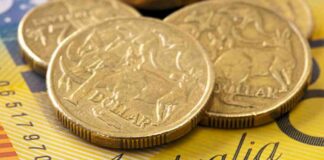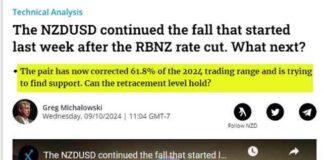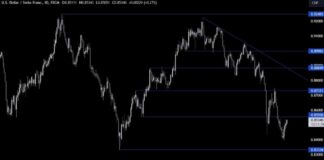US Second Quarter GDP Upgrade Drives USD Gains
The latest economic data coming out of the United States has brought some mixed signals for the markets. The second estimate for the US second-quarter GDP came in at +3.0%, slightly higher than the +2.8% expected by analysts. This positive news initially led to gains for the US dollar, with the currency rising around 25 pips against most major counterparts and a full cent against the Japanese yen. However, as the day progressed, the greenback began to give back some of its gains, particularly against commodity currencies like the Australian dollar, Canadian dollar, and New Zealand dollar.
One of the key factors driving the US dollar’s movements was the better-than-expected GDP data. The upgrade in the GDP figure suggests that the US economy is performing better than previously thought, which could have implications for the Federal Reserve’s monetary policy decisions in the future. The stronger GDP number may also reflect increased consumer spending, business investment, and government expenditures, all of which are positive signs for economic growth.
Jobless Claims and Trade Balance Numbers
In addition to the GDP data, other economic indicators released by the US government painted a somewhat mixed picture of the economy. Initial jobless claims for the week came in at 231,000, slightly lower than the expected 232,000. This indicates that the labor market remains strong, with fewer people filing for unemployment benefits. However, the US advance goods trade balance for July showed a widening deficit of -102.66 billion, compared to the prior month’s -96.56 billion. A widening trade deficit can have negative implications for the economy, as it suggests that the country is importing more goods than it is exporting.
The combination of these different economic indicators can create uncertainty for investors and traders, as they try to gauge the overall health of the US economy. While the stronger GDP figure is a positive sign, the widening trade deficit could raise concerns about the country’s economic competitiveness and its ability to sustain long-term growth.
Central Bank Comments and Credit Ratings
Central bank officials and credit rating agencies also made headlines during the day, adding to the market’s volatility. The European Central Bank’s Nagel cautioned that a timely return to price stability cannot be taken for granted, highlighting the challenges that central banks face in managing inflation and economic growth. Meanwhile, the Swiss National Bank’s Jordan emphasized the importance of price stability as a crucial precondition for growth and prosperity, echoing similar sentiments from central bankers around the world.
On the credit rating front, Fitch affirmed the USA’s credit rating at AA+ with a stable outlook, indicating confidence in the country’s ability to meet its financial obligations. Credit ratings play a crucial role in determining a country’s borrowing costs and overall economic stability, so any changes in these ratings can have significant implications for financial markets.
Market Reactions and Currency Movements
The release of economic data and central bank comments had a notable impact on financial markets, with various asset classes reacting differently to the news. Gold prices rose by $19 to $2521, reflecting investors’ appetite for safe-haven assets amidst the economic uncertainty. US 10-year yields also saw an increase of 2.9 basis points to 3.87%, as bond investors adjusted their expectations for future interest rate hikes by the Federal Reserve.
In the commodity markets, WTI crude oil prices surged by $1.54 to $76.06, driven by expectations of strong global demand and potential supply disruptions. The S&P 500 index remained flat at 5589, as investors weighed the latest economic data and corporate earnings reports to determine the market’s next direction.
Currency movements were also notable, with the New Zealand dollar leading the pack while the Swiss franc lagged behind. The US dollar initially gained ground on the back of the stronger GDP data but later gave back some of its gains as traders repositioned their portfolios and adjusted to month-end flows. The dollar’s performance against the yen, in particular, saw a full cent gain before retracing most of those gains by the end of the day.
In conclusion, the latest economic data and central bank comments have created a mixed picture for the markets, with investors and traders navigating through uncertainty to determine the best course of action. The US dollar’s movements, in particular, have been closely watched, as it reacts to changing economic conditions and expectations for future monetary policy decisions. As the markets continue to digest the latest information, it will be important to monitor key indicators and central bank statements for further insights into the global economy’s trajectory.

















